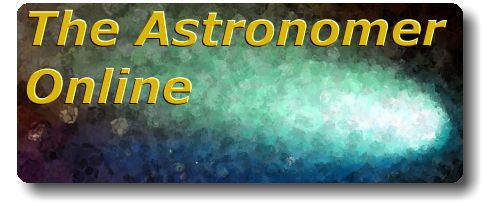
Last Updated:
2017 Jan 15 15:49 UTC
Source file:
pro_am.txt


Last Updated: |

|
Contents
|
BackgroundSince its formation in 1964 The Astronomer has promoted close cooperation between professional and amateur astronomers. This broadly falls into two areas:
If any professionals need assistance from amateurs on future projects please do not hesitate to e-mail the Editor.
Variable Star ProjectsNowhere is the opportunity for important exchanges between amateurs and professionals greater than in the observation and study of variable stars, including novae and supernovae. In an average year more than one hundred exchanges take place.The close cooperation between the two groups often covers simultaneous observation by amateurs of variable stars from the ground (visually or electronically) and also by professionals who may be using a satellite to study these stars at other wavelengths. The records of the BAAVSS and TA are also regularly consulted by professionals wishing to establish the long term patterns of light curves. In some cases the stars are obscure and only suspected of variation but may have been the subject of comment in TA. The editor has a complete set of the magazine going back to 1964 and we often find a relatively old issue can contain information of value to the professional. We welcome contact from both professionals and amateurs keen to participate in PRO-AM. You will find more details on the Professional /Amateur Liason Committee page. Comet Hale-BoppThe following is an extract from TA E-Circular 1164 of 1997 Feb 1:Mark Kidger, Direct Imaging Team Leader for the European Comet Hale-Bopp Collaboration e-mails: "Given the very special nature of Comet Hale-Bopp a special meeting was held at ESO Headquarters in Munich in February 1996 to arrange collaboration between European cometary observers to study this object. A result of this meeting was an application for International Time for the telescopes in the Canary Islands to carry out an intensive observing campaign. This project was presented in July 1996 and awarded time at the October meeting of the International Scientific Committee that oversees the functioning of the observatories. Time has been awarded on the William Herschel, Isaac Newton & Jacobus Kapteyn Telescope of the British Isaac Newton Group, on the Nordic Optical Telescope and on the Spanish Carlos Sanchez Telescope. Smaller telescopes will also contribute to the campaign. The project involves highly coordinated observations by a large fraction of the entire European comet observing community (19 names appear on the proposal, headed by Richard West.. as in "Comet West", with the active support of some 20 more) and a very heavy concentration of observing effort, particularly in April when as many as eight telescopes may be scheduled simultaneously to observe. At the Project Coordination Meeting held in Munich a week ago I suggested that amateur observers could make a valuable contribution by keeping us up to date with the day-to-day evolution of the comet. If interesting things appear to be happening in the light curve we could then be more flexible in our observing plan to study them (eg: outbursts, splitting, unusually activity). This was agreed as being a useful adjunct to the project. It is suggested that all observers send their data to Guy Hurst on a daily basis and that this be submitted in TA or ICQ format (although preferably with notes rather than special characters in the magnitude column). TA will then send updated files regularly to us for easy analysis. This file can then be plotted-up and analysed very easily and daily bulletins issued to the observers. The first observations in the William Herschel Telescope are on 1997 Feb 7 and observations will carry on up to the end of April. There are just 2 isolated nights of observation in February, rather more in March and a very intense effort in April. It would be nice if the data could start flowing for the date of the first observations, just to give us a line on the comet's behaviour." Following discussions with Mark Kidger and referral to Jonathan Shanklin, Director of the BAA Comet Section, we intend to fully support the above proposal. Effective from today (1997 Feb 1) we ask that observers send in observations of this comet daily by e-mail. This will not only permit compilation of a daily report to the professional astronomers, but will also ease the peak workload for the editor in the preparation of the comet notes. We would also stress that as far as TA is concerned we would appreciate daily contributions from all our observers including those outside Europe. Finally could I stress we need the results in TA or ICQ format. Delays in preparation of TA have been serious recently due to submissions in a non-standard format. Light curves obtained from the combined TA/BAA data are being updated regularly by professionals. |
|
Webmaster: Peter Meadows |